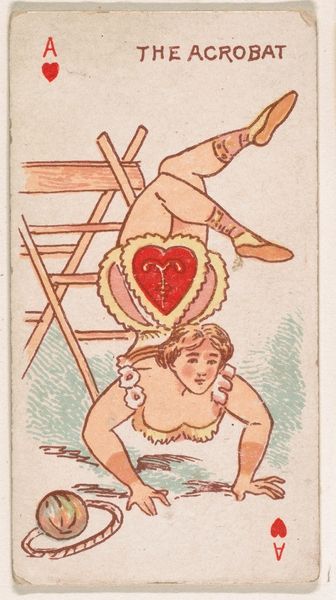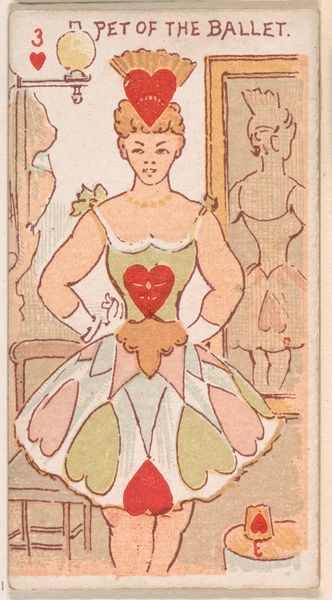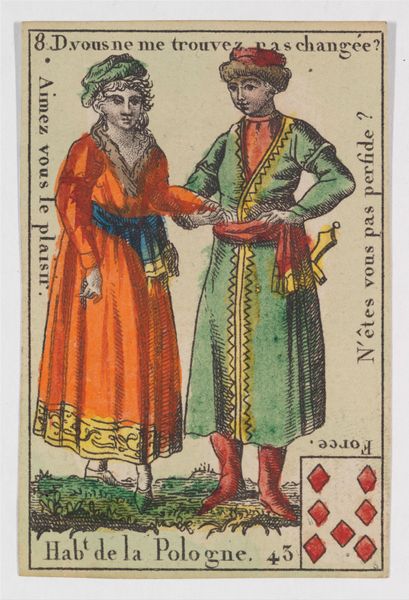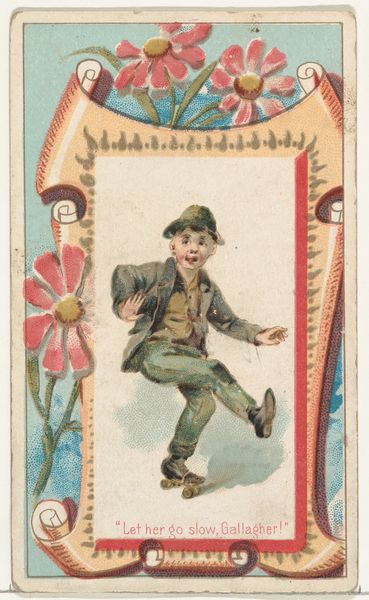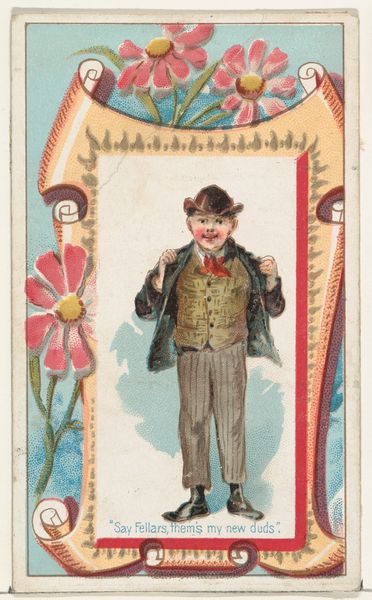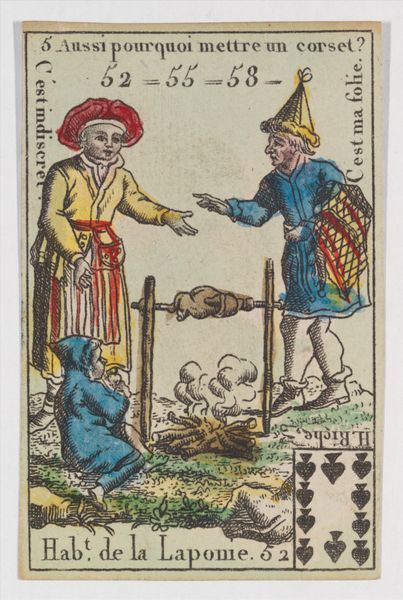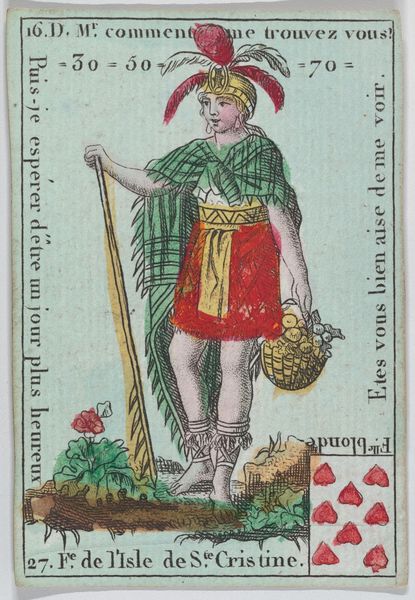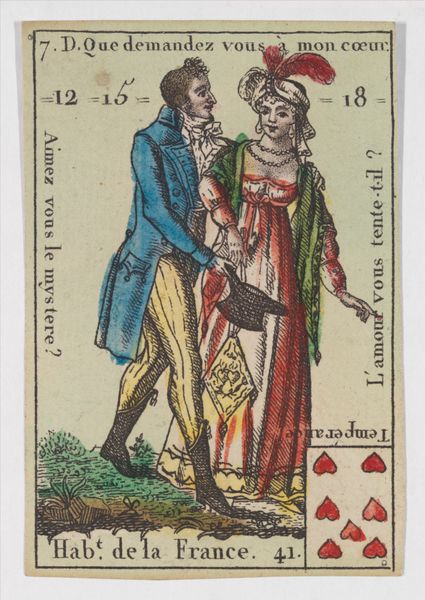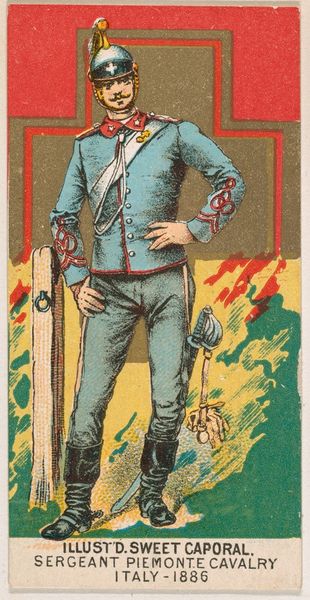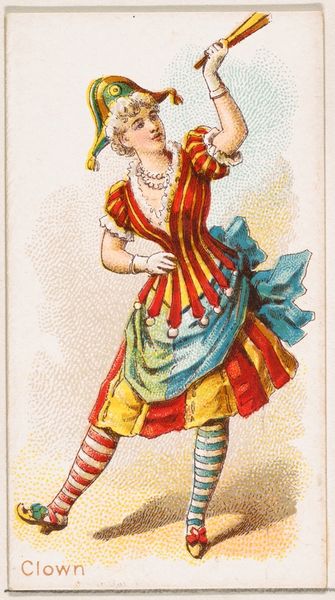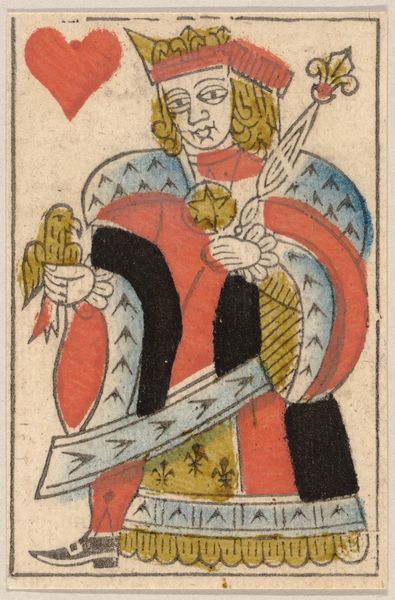
Seven of Hearts, School of Fence, from Harlequin Cards, 2nd Series (N220) issued by Kinney Bros. 1889
0:00
0:00
drawing, print
#
drawing
# print
#
figuration
Dimensions: Sheet: 2 3/4 × 1 1/2 in. (7 × 3.8 cm)
Copyright: Public Domain
Curator: What a curious object! A card depicting what I assume is a fencing school, and everyone's uniforms are emblazoned with giant hearts. The color palette is muted but the imagery is so bizarre! Editor: Indeed. We're looking at "Seven of Hearts, School of Fence" from the Harlequin Cards series, made around 1889 by Kinney Bros. Tobacco Company. It’s a drawing reproduced as a print, likely a chromolithograph, that was included in cigarette packs. It’s now held at the Met. Curator: Tobacco advertising as art, situating itself in the public sphere… What underlying ideologies might we unpack? The rise of consumer culture, the gendered implications of smoking as a status symbol... How was this normalizing societal habits? Editor: Certainly. The material conditions of its production are quite telling. Think about the laborers involved – the artists, printers, factory workers – and the networks of distribution tied to the global tobacco trade. We see class dynamics at play, both in terms of labor and in the marketing targeted towards particular consumers. Curator: And how does this seemingly lighthearted image engage with, or perhaps subtly reinforce, hierarchical power structures? Who had access to these spaces of "learning," and what broader implications did such affiliations have on class and social mobility during that period? Editor: Precisely. The materials tell us part of the story: cheap paper stock indicates mass production, a disposable culture. But the careful printing also speaks to craft traditions. Examining these tensions reveals much about late 19th-century American society and consumer habits. The commodification of leisure... interesting. Curator: The heart motif paired with militaristic imagery creates such a strange tension! How might viewers have interpreted this symbolic contrast? The artist is toying with conceptions of virtue, masculinity, perhaps even patriotism, while ultimately promoting consumerism. What commentary might that hold about cultural anxieties of the time? Editor: Indeed. By viewing it this way, we’ve moved beyond simply appreciating the image as an aesthetic object and uncovered aspects about labor, material culture, and marketing strategies inherent to that time period. A rich starting point. Curator: This discussion illuminates the subtle ways that art shapes our perceptions and behaviors! The card provides such insight into the relationship between material culture, commerce, and personal expression, urging viewers to become aware and informed citizens, as active shapers of culture. Editor: Absolutely. And hopefully, the consideration of the processes of production, consumption and circulation have enriched our understanding of the broader material context that gives meaning to these kinds of seemingly simple images.
Comments
No comments
Be the first to comment and join the conversation on the ultimate creative platform.
